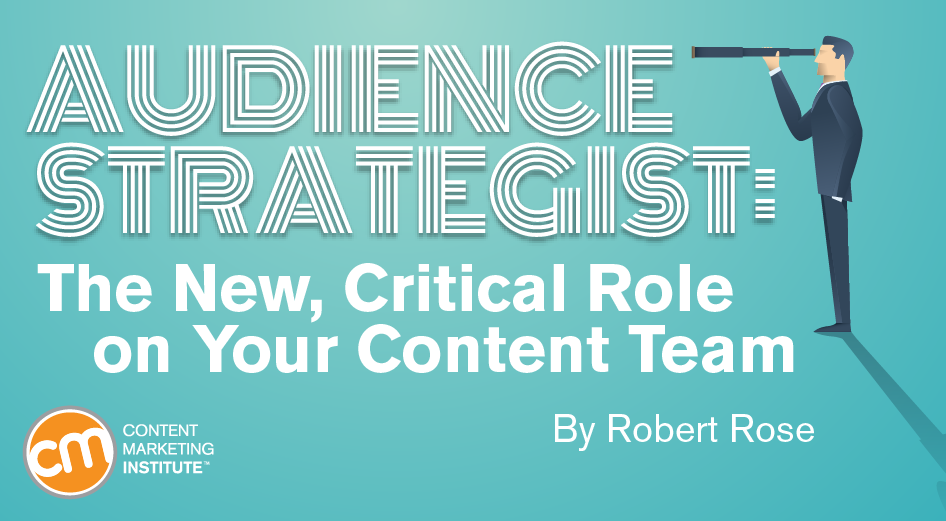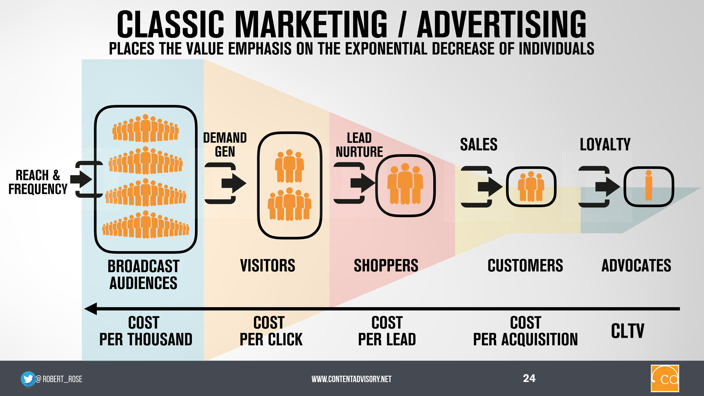Author: Robert Rose / Source: Content Marketing Institute

Ready for a new job? No, I don’t mean that. Unless of course I do – but then that’s a different conversation for different beverages. I mean are you ready for a new role in addition to the one you have now?
Our content marketing research this year illustrates that one of the key differentiators of those who are succeeding with content as a strategic function of their marketing is the focus on building audiences. Some 90% of those who consider their content marketing “successful” cite building an audience as their main focus. This is a notable jump from the previous year’s 60%.
What these businesses are discovering is that looking at content only as a campaign or as a replacement for other marketing assets is a flawed approach. When content is only seen as a means of feeding direct marketing campaigns, there is only one directly attributable value – a replacement for the advertisement, brochure, or other creative marketing asset. And, guess what? Content often is more expensive than those other options. It’s harder. And, it takes longer. So, it’s frustrating.
The successful businesses have discovered that content marketing must provide more than one type of value to be worth the investment. It must provide integrated value across multiple areas in the business.
Re-examining the funnel
This evolution of content marketing is best expressed when I illustrate the differences between looking at a funnel-based marketing approach vs. an audience-building approach.
In classic marketing (see the image below), you start by finding the largest audience you can and placing content (sometimes called brochures or advertising) in front of that audience. You transform a portion of the audience into visitors. Then, through compelling, persuasive content, you evolve a smaller number of those into leads. This process continues until you convince a few to become customers. From there, you hope a percentage will evolve into loyal brand evangelists.

There are two keys to this model. First, it’s built on the premise that each step advances an ever-decreasing number of people to the next step. Hence the name “funnel.”
But, more importantly, it devalues (sometimes to the point of negligence) anyone who falls out at each step. Anyone who falls out of the funnel is simply, well, gone. You start back at scratch to pull them in again.
The second key is that you associate the value of cost savings with the acquisition of the group in the previous step. Across the spectrum, you measure:
- Lifetime value of customer – measured against …
- Cost per customer acquisition – leading back to …
- Cost per qualified opportunity – which is informed by …
- Cost per lead – which is measured out of …
- Cost per visitor – which is compared to …
- Cost per thousand (CPM) – for that reach and frequency
Today’s smart marketers memorize these numbers across all of these costs. And, many times these metrics are how budgets and strategies are set. As a side note, with so much measurement built on cost, is it any wonder that so much of marketing strategies is built on the question “how expensive is it?”
Now, to be clear, this model is extraordinarily valuable, has worked well for decades, is not going away, and is in no way broken (well, OK maybe it’s a little broken – but that’s for a different post). The funnel approach…
Audience Team
The digital audience insights you need to build, manage and market to your digital audiences.

